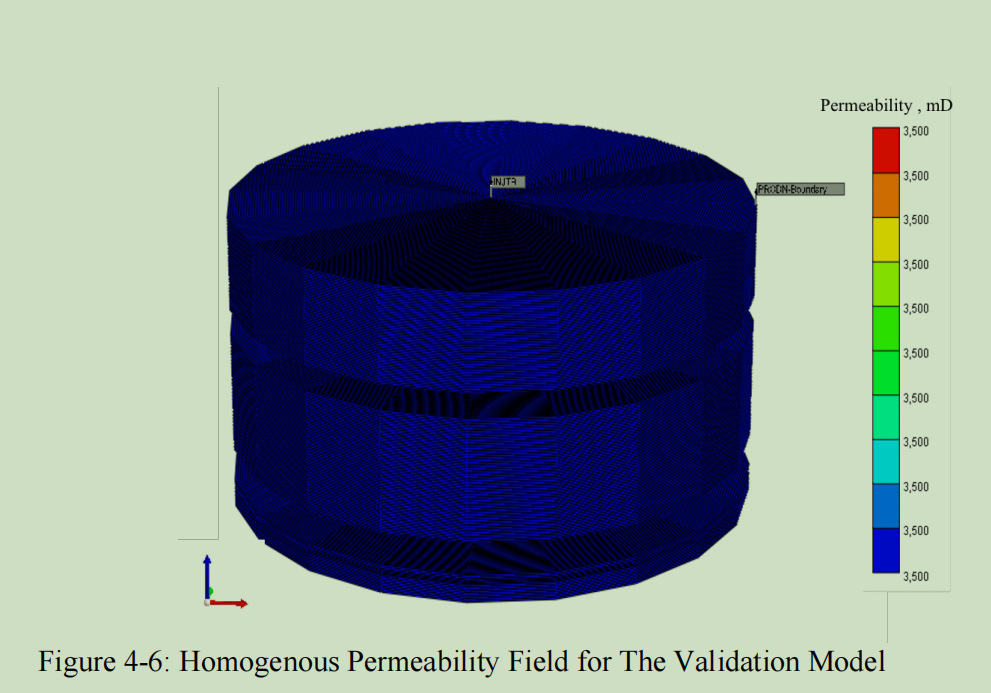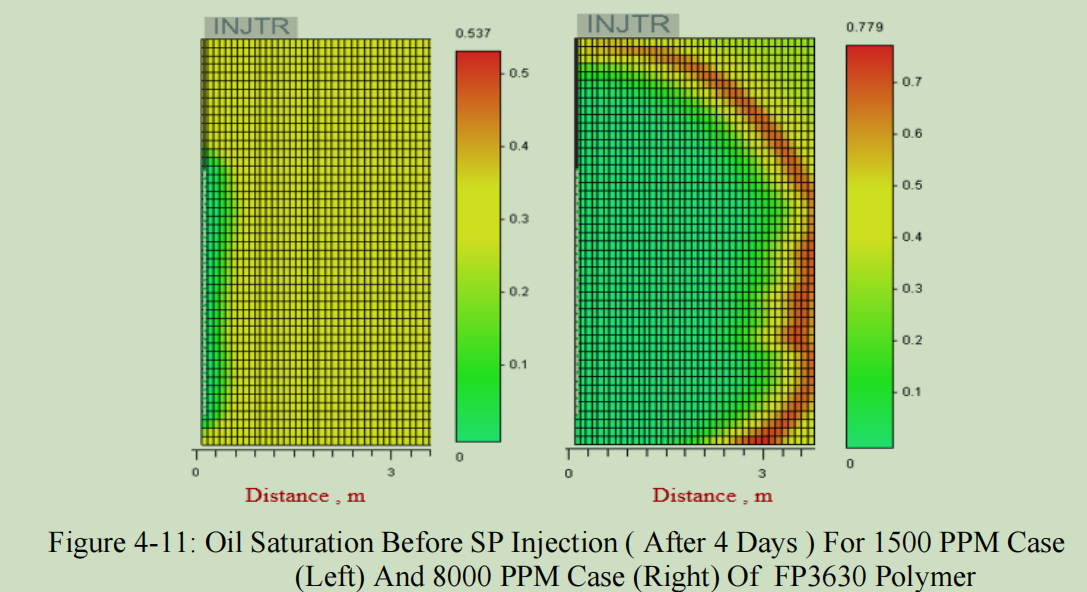Design of Single and Multi-Well Surfactant-Polymer EOR Tests in a Viscous Oil Reservoir
聚表二元驱(SP)是一种成熟的提高采收率(EOR)技术,已在实验室和现场先导试验中进行了广泛评估。SP技术的有效性体现在它能够结合表面活性剂和聚合物的相关机理:使用表面活性剂驱动不连续的油滴,聚合物注入提高驱油效率。模拟从实验室尺度放大到矿场规模的相关机理,对于现场实施的设计和成功非常重要。本研究的目的是在高粘度砂岩储层中进行现场SP先导试验的完整设计。该设计从岩心实验历史拟合开始,然后扩大到单井试验、井间示踪剂试验,最后到多井SP先导试验。 使用CMG-STARS模拟器,开展了8个岩心驱替的关键物化参数建模和历史拟合研究。这些参数用于模拟单井化学示踪剂试验(SWCT)、井间示踪剂试验(IWTT)和多井SP先导试验。试验模拟采用5点井网的分区模型。试验设计包括了聚合物类型、浓度、SP段塞大小、注入速度和注采比(IPR)、示踪剂浓度和注入量,以及注入PV数等多个敏感性参数研究。通过岩心实验成功进行了历史拟合。 开发的表面活性剂和聚合物模型随后用于SWCT、IWTT和SP。SP段塞大小和示踪剂注入量是解释SWCT的关键参数。示踪剂注入量是IWT设计中最基本的变量。根据敏感性分析结果,建议每个试验的设计参数。为了给SP设计提供最大提高采收率方案,对包括IPR、SP段塞尺寸和聚合物浓度在内的各种参数进行了优化。结果表明,采收率提高22%。如果从现场实施的IWTT中获得新的数据,提供有关储层特征的有价值信息,可进一步改善SP先导试验设计。
Abstract
Surfactant-polymer (SP) flooding is a well-established enhanced oil recovery (EOR) technique that has been extensively evaluated in the laboratory and field pilot scales. The efficacy of the SP process is manifested in its ability to combine the mechanisms of surfactant and polymer methods: mobilization of the discontinuous oil ganglia using surfactant and sweep enhancement of the polymer injection. Modeling of these advanced processes, with adequate upscaling from laboratory to pilot scale, is vital for field implementation design and success. The objective of this work is to conduct a thorough design of field SP pilot tests in a highly viscous sandstone reservoir. The design starts from history matching coreflood experiments, followed by an upscaling to a single well test, an interwell tracer test and finally a multi-well SP pilot test.
Using the numerical simulator CMG-STARS, the workflow begins with constructing and matching key physico-chemical parameters from 8 core floods. Then these parameters are used with the reservoir description to simulate single-well chemical tracer test (SWCT), inter-well tracer test (IWTT) and multi-well SP pilot test. A sector model including 5-spot pattern was used in the pilot simulation studies. The design process of the tests entailed conducting several sensitivities pertaining to polymer type, concentration, SP slug size, well rates and injection production ratio (IPR), tracer concentrations and amounts, and pore volumes injected. A successful history match was achieved with coreflood experiments.
The developed surfactant and polymer models were then used in the SWCT, IWTT and SP pilot models. SP slug size and tracer push volume were the key parameters for the interpretation of SWCT. Injected tracer amount was the most fundamental variable in the design of the IWTT. Based on sensitivity results, design parameters were recommended for each test. To provide recovery-maximizing testing strategy for the SP pilot design, optimization of various parameters including IPR, SP slug size, and polymer concentration was used. As a result, an incremental recovery of 22% was achieved. If new information is acquired from field implemented IWTT, it can provide valuable information about the reservoir characteristics that could further augment the SP pilot design.




